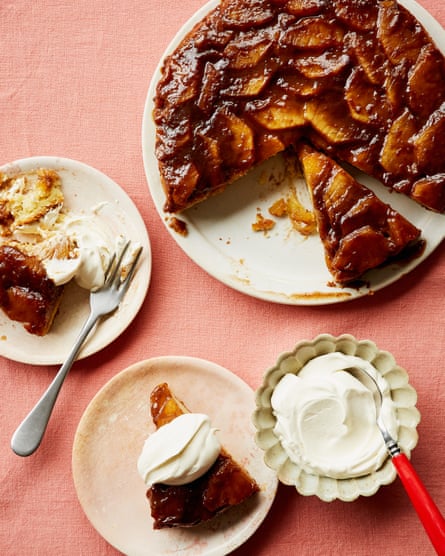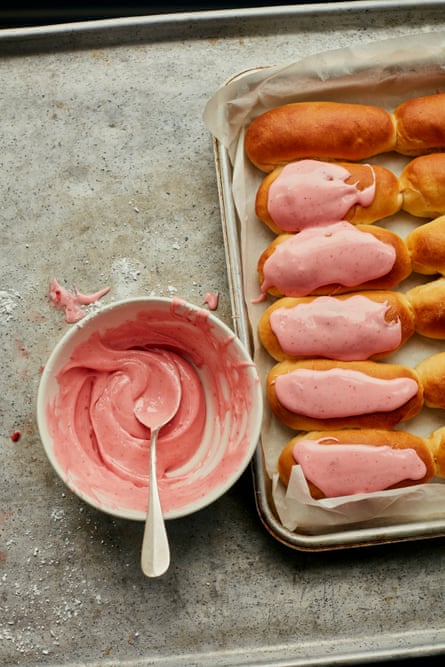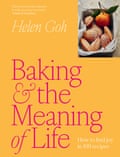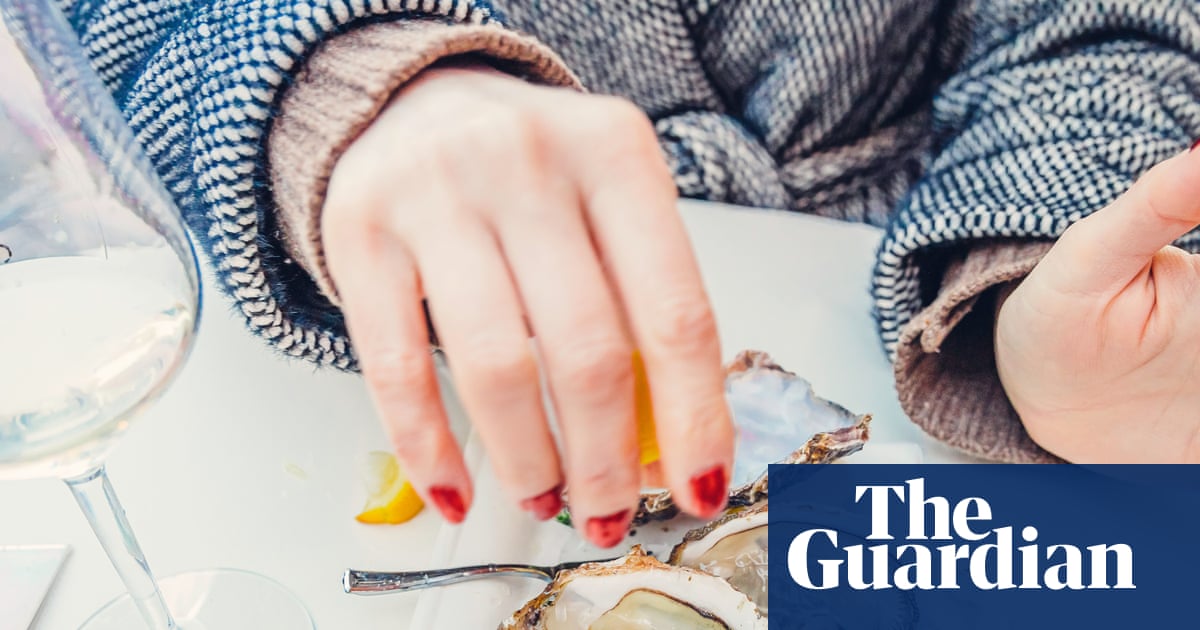When Sweet, the baking book I co-authored with Yotam Ottolenghi, came out in the United States in 2017, my excitement at seeing so many people bake from it was matched only by my horror at what I saw them pulling from their ovens on Instagram: pale cakes with thick, dark exteriors.
Posts from Australian and British readers showed no alarming results and I quickly realised something had gone awry in the American translation. As it turned out, the recipes had been converted in-house by the publisher, using a straightforward formula to change celsius to fahrenheit. What no one had noticed was that the conversion also needed to take into account the oven setting: fan-forced versus conventional heat. Many American ovens, it seems, still don’t have a fan function. Reader, there were tears.
Scarred by that experience, the first thing I did when I signed my next American contract was to find a tester in Australia and the US who could bake every recipe in their own kitchens before a single page went to print.

It’s not just oven temperature, of course. Subtle differences in measurements and ingredient types in recipes can trip up even experienced cooks. In Australia and the UK, baking is mostly metric: grams and millimetres rule, but tablespoons in Australia are 20ml while in the UK and US, it is 15ml. It seems minor but that extra teaspoon can affect delicate batters or dough, so I often revert to teaspoons, which is 5ml in every country, to avoid any surprises.
Australian “plain flour” is equivalent to American “all purpose” while the UK’s “strong flour” is bread flour. Self-raising flour (“self-rising” in the US) exists in all three countries but differs in protein content and leavening. American self-rising flour is soft and light, perfect for their biscuits and pancakes, but less sturdy for cakes or scones. US “cake flour”, used to produce a soft, fine crumb in cakes, is not easy to come by in Australia and the UK, so techniques such as folding batter gently, so as not to overwork the gluten, is important.
Caster sugar, the go-to for baking in Australia and the UK, is considered a specialist ingredient in the US where it is sold as “superfine sugar”. American bakers mostly use regular granulated sugar, so instructions to cream butter and sugar, especially for a light cake batter or pavlovas, can take longer.
Cream can be a minefield. I remember making my favourite lemon loaf cake at a baking demo in the US and only realising too late that the “heavy cream” listed as the equivalent of UK double cream was thinner than what I usually use at home. The resulting cake was dense, heavy and lacking the rich, silky mouthfeel I expected. The difference may seem small, but as I discovered, fat content has a huge impact on the texture of baked goods.
In the UK, all types of cream are readily available in supermarkets, but in Australia, double cream is usually a specialty item, sold only at select shops. I recently had an experience on Australian live television while assembling a cake sandwiched with whipped cream: the double cream called for in the recipe thickened into something almost like clotted cream after just a few turns of a hand whisk – I stopped just short of it turning into butter!

UK double cream (about 48% fat) is rich and whippable; single cream (about 18%) is pourable; clotted cream (55–60%) is spoonable. Australian thickened cream (about 35% fat, stabilised) and pure cream (about 35%) are versatile, while US heavy cream (36–40%) is closest to UK double cream.
So, when converting recipes, it’s crucial to consider both fat content and stability. Sometimes that means adding a little mascarpone to American heavy cream to mimic the richness of UK double cream, or slightly diluting a very rich Australian premium double cream with cold milk and adjusting whipping speed or temperature to achieve the right consistency.
Baking internationally can be confusing. But by understanding each country’s ingredients, you can more accurately translate recipes while preserving texture and flavour – and that home-baked goodness.

Helen Goh’s strawberry iced finger buns – recipe
I sometimes buy finger buns from the supermarket, ostensibly for the kids, but the truth is I love them as much as they do. But while it’s joyous sinking your teeth into those pillowy soft buns on day one, there’s something slightly disturbing when they remain eversoft on days three or four. What is even in them? So I thought I’d have a go at making my own.
Asking you to boil the milk and then let it cool might seem a bit crazy, but there’s method in the madness. Boiling the milk breaks down the proteins and results in a softer, more tender bread. It also makes the milk more effective in hydrating the flour, improving the texture of the dough. But make sure to cool the milk before mixing in the yeast – that’s essential to get the rise.
Makes 12
For the milk bread
150ml full-cream milk
2 tsp active dried yeast
30g caster sugar
375g plain flour
75ml water, boiling hot
15g milk powder
¾ tsp fine sea salt
1 egg
50g unsalted butter, cut into 1 cm pieces, then left to soften
Vegetable oil, for greasing
For the icing
60g strawberries, hulled and roughly chopped
300g icing sugar
½ tsp vanilla bean paste
20g liquid glucose (optional)
To make the bread, put the milk in a small saucepan over medium heat. Bring to a simmer, then remove from the heat. Set aside to cool to 38C (cool enough to touch) then whisk in the yeast and two teaspoons of the sugar. Let it stand to allow the yeast to activate and froth, about five minutes.
Meanwhile, place 75g of the flour in a small heatproof bowl. Pour the boiling water over and mix with a spoon to form a stiff, shaggy paste. Cover the bowl and set aside to cool.
Put the remaining 300g of flour, the milk powder, salt and remaining 20g of sugar in the bowl of an electric mixer and stir with a whisk to combine. Add the flour and water paste, the yeast/milk mixture and the egg and mix with the dough hook on a low speed for about two minutes, until a scraggly dough forms.
Add the butter, a little at a time, until incorporated. Increase the speed to medium and knead for about three minutes, until smooth. Scrape the dough out on to a clean work surface and knead gently for a couple of minutes, then shape into a ball and place in a lightly greased bowl. Cover with a damp tea towel and set aside in a warm place until doubled in size, around one to two hours, depending on the temperature of the room.
Meanwhile, prepare a baking tin (approximately 35 × 25 cm measured across the base) by lining it with baking paper.
When the dough has doubled in size, knock it down with your fist and turn it out on to a clean work surface. Cut it into 12 equal pieces, roughly 60g each. Taking one piece at a time, press the dough into a rough square approximately 10cm. Starting from the side closest to you, roll up into a small log, pinching and smoothing the ends and seam to seal, creating a little sausage. Repeat with the remaining pieces of dough, and place them 2cm apart on the lined baking tray.
Cover the tray loosely with plastic wrap and leave in a warm place for 45 to 60 minutes, until doubled in size.
When the buns are well risen, preheat the oven to 170C fan. Bake for about 18 minutes or until golden brown. Transfer to a wire rack to cool.

To make the icing, place all the ingredients in a food processor and blitz together until smooth. Drizzle over the tops of the cooled buns, and allow the icing to set before eating.

 3 hours ago
3
3 hours ago
3

















































